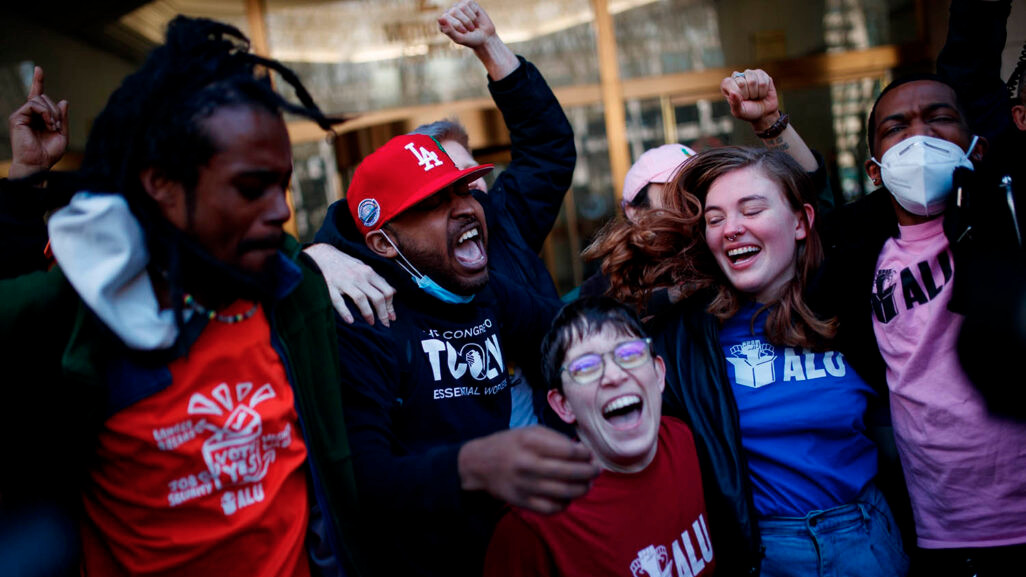
Nationwide support for organized labor in the United States has reached a peak since the 1960s. According to the Center for American Progress (CAP) in their analysis of the data of the 2020 American National Election Studies (ANES), among all generations of the labor market 55% are in favor of trade unions, with the younger generations showing an overwhelming support at an average of 65% in favor.
The ANES surveyed a range of people from different generations, and asked them to rate their support of labor unions on a scale of 0 to 100. The data suggests that there is significant support for organized labor among all generations in the workforce, however, the cohort that expressed the largest support was among members of Generation Z (25 years and under). Gen Z had an average of 64.3% in support of labor unions, compared with the average of 60.5% among the millennials (25 to 40 years old), 57.8% on average in Generation X (40 to 55 years old), and 57.2% in the baby boomer generation (55 to 75 years old).
In fact, Gen Zers have expressed more widespread support for unions than all older generations did when they were their age. When the survey was conducted in 2020, the oldest Gen Z members were 23 years old and, as mentioned, had an average of 64.3% support for unions. In 2004, when the oldest Millennials were 23 years old, they expressed an average of 61.2%, In 1988, when the oldest Gen Xers were 23 years old, they expressed an average of 59.0% support for unions.
The Center for American Advancement suggests from the data that Gen Z is the most supportive generation of organized labor today due to the growing racial, ethnic, class and gender diversity of those joining the workforce from this generation. The center also concludes that unions have gained increased support among both traditionally pro-union demographic groups, including women and the working class, as well as traditionally non-pro-union groups including Republicans and white-collar workers.
The above figures are also consistent with the significant wave of unionization across the American workforce, and an increased awareness and discourse surrounding workers struggles and improving working conditions in a post-pandemic market. This can be seen particularly in workplaces characterized by young people, such as at Starbucks, Amazon and Apple. This also includes new phenomena in the post-COVID-19 workforce such as the demand for the “right to disconnect”, which is the right for people to disconnect from work and not engage in work related electronic communications, such as emails, in non work hours, pulling younger employees into this wave of pro-union support.
Overwhelming support transcends traditional divides
According to the analysis from the CAP, this overwhelming support from Gen Z in America for labor unions intersects a large range of demographics including class, political opinion and gender.
When analyzing the difference in support for labor unions between those who have obtained higher education degrees, millennials were the only generation in which respondents with college degrees had a broader support for unions than respondents without a degree, with support at 61.3% for those with an academic degree compared to 59.9% for those without. Gen X members with a college degree showed the lowest rating of support for trade unions, combined with the widest gap in support between respondents with an academic degree and respondents without a degree compared to other generations.
The data also suggests that in the U.S., there is a narrowing of the gap between those who support trade unions and members of the Democratic and Republican parties. Gen Z have the narrowest partisan gap between Democrats and Republicans in support of unions, with 70% support for unions among Democrats, and 56% among Republicans. Following that trend are millennials, with 67% of Democrats in support of unions compared to 52% of Republicans from this generation; Gen X with 65% of Democrats in favor compared to 49% of Republicans; and lastly baby boomers with the largest gap between parties, with Democrats at 69% support of unions compared to 46% of Republicans in that generation.
There is also a difference of support in labor unions between gender, with traditionally women in larger support for organized labor than men. However, Gen Z are the only generation in which men expressed greater support for unions than women, at 65.7% compared to 62.8% respectively. Millennial women supported unions at an average of 61.9% compared to 59% of millennial men; Gen X women showed 59.3% favor compared to 56.2% for Gen X men; and in the baby boomer generation, women supported an average of 59.4% compared to only 54.8% for men.
The researchers of this study concluded that as more young people complete their education and enter the workforce, the broad pro-union consciousness among young workers today may accelerate and ensure organized labor a home in America’s workforce for decades to come.
This article was translated from Hebrew by Nancye Kochen.






